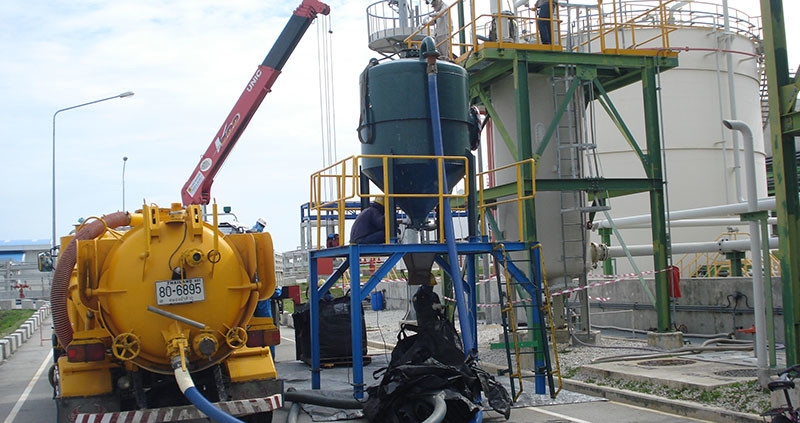Catalyst Loading and Unloading
Handling catalysts in industrial settings is a crucial task that requires precision and care. Catalysts are substances that speed up chemical reactions, making them vital for many industrial processes like refining oil, producing chemicals, and generating power. Properly loading and unloading these materials ensures that the entire process runs smoothly and efficiently.
Catalyst loading involves placing the catalyst material into reactors or other containers where it can perform its function. This step must be done carefully to avoid any contamination that could affect the catalyst’s performance. On the other hand, unloading involves safely removing spent catalyst from the system. Spent catalysts often contain hazardous materials, so this step requires special attention to safety and environmental guidelines.
In this article, we will delve into the essentials of catalyst loading and unloading. We will look at the tools and equipment needed for the job, the safety measures you should follow, and useful tips to make the process more efficient. By understanding these aspects, you can ensure safe and effective catalyst handling in any industrial setting.
Understanding Catalyst Loading and Unloading
Catalyst loading and unloading is a critical process in many industrial operations. During loading, the catalyst materials are carefully placed into reactors or vessels where they will facilitate chemical reactions. This step must be performed without any contamination to ensure the catalyst works properly. Contaminants can hinder the catalyst’s effectiveness, impacting the entire process.
Unloading spent catalysts is equally important. Spent catalysts are those that have been used and are no longer effective. These materials need to be removed carefully, as they can contain hazardous substances. Proper unloading ensures that the reactor is clean and ready for the next batch of catalyst. To handle these tasks effectively, operators must follow specific procedures and guidelines designed to minimise risks.
To summarise, the steps involved in catalyst loading and unloading are:
1. Preparation: Ensuring all equipment and tools are ready and clean.
2. Loading: Carefully placing the catalyst into the reactor without contamination.
3. Monitoring: Keeping an eye on the process to ensure everything is working correctly.
4. Unloading: Safely removing spent catalysts, following safety and environmental guidelines.
Essential Equipment and Tools for Catalyst Loading and Unloading
Using the right equipment makes catalyst loading and unloading more efficient and safe. Here are some of the essential tools and equipment needed:
1. Personal Protective Equipment (PPE): Safety goggles, gloves, and respirators protect workers from exposure to harmful substances.
2. Vacuums and Conveyors: These tools help in moving catalysts into and out of reactors without spilling or contaminating the material.
3. Inert Gas Blankets: Used to prevent catalysts from reacting with air or moisture during loading.
4. Hoppers and Bins: These containers hold the catalyst during the loading process, ensuring it’s easily transferred without contamination.
5. Specialised Tools: Scoops, shovels, and other hand tools designed for handling catalysts help in placing and removing materials efficiently.
Using the correct equipment ensures that the catalyst loading and unloading process is done smoothly and safely. It also helps to reduce the risk of contamination and exposure to hazardous materials. By preparing the right tools and maintaining them regularly, we can ensure that the entire process runs efficiently and safely.
Safety Measures to Follow During Catalyst Handling
Handling catalysts requires strict safety measures to protect both workers and the environment. First and foremost, wearing Personal Protective Equipment (PPE) is essential. This includes gloves, safety glasses, and respirators. PPE helps shield workers from exposure to harmful substances that may be present in the catalyst material. Ensuring all PPE is well-maintained and correctly used is vital.
Next, proper ventilation is key in areas where catalysts are handled. Good ventilation reduces the concentration of harmful fumes and particles in the air, making the environment safer for everyone. Implementing extraction systems and ensuring that these systems are regularly maintained can help keep air quality at safe levels.
Handling procedures should also be well-defined and followed meticulously. This includes proper labelling of containers, secure storage, and clear instructions on how to load and unload catalysts safely. Emergency protocols must be in place to quickly respond to any spills or accidents. Regular safety drills and clear communication about these protocols ensure everyone knows their role in maintaining a safe workspace.
Tips for Efficient Catalyst Loading and Unloading Operations
Efficiency is crucial when loading and unloading catalysts. Here are some tips to ensure the process runs smoothly:
1. Prepare in Advance: Ensure that all tools and equipment are ready before starting the operation. Check that everything is clean and in good working condition.
2. Use Quality Equipment: Investing in high-quality tools and machinery can make the process faster and safer.
3. Training: Regular training sessions for workers ensure they are familiar with the procedures and equipment. Well-trained staff can perform tasks more efficiently and safely.
4. Clear Communication: Maintain open communication among team members to coordinate tasks and avoid misunderstandings.
5. Monitor the Process: Keep a close eye on the loading and unloading process to quickly identify and address any issues that arise.
By following these tips, we can enhance the efficiency of catalyst loading and unloading, reducing downtime and increasing productivity. A well-organised operation ensures that materials are handled safely and without unnecessary delays.
Conclusion
Efficient and safe catalyst loading and unloading are essential for maintaining smooth industrial operations. By understanding the process, using the right equipment, following strict safety measures, and implementing best practices, we can ensure that catalyst handling is done effectively. The importance of proper training, maintaining equipment, and adhering to safety protocols cannot be overstated. These steps protect workers, preserve the environment, and keep the industrial processes running seamlessly.
If your business needs expert assistance with catalyst loading and unloading, contact TEGS Thailand. Our skilled team and top-notch equipment rental guarantee efficient and safe handling of your catalysts. Reach out to us today to optimise your catalyst operations.




